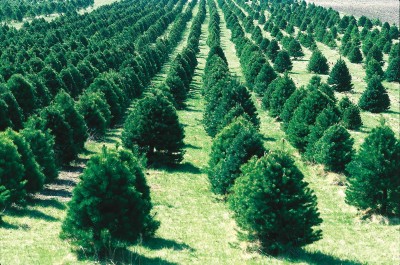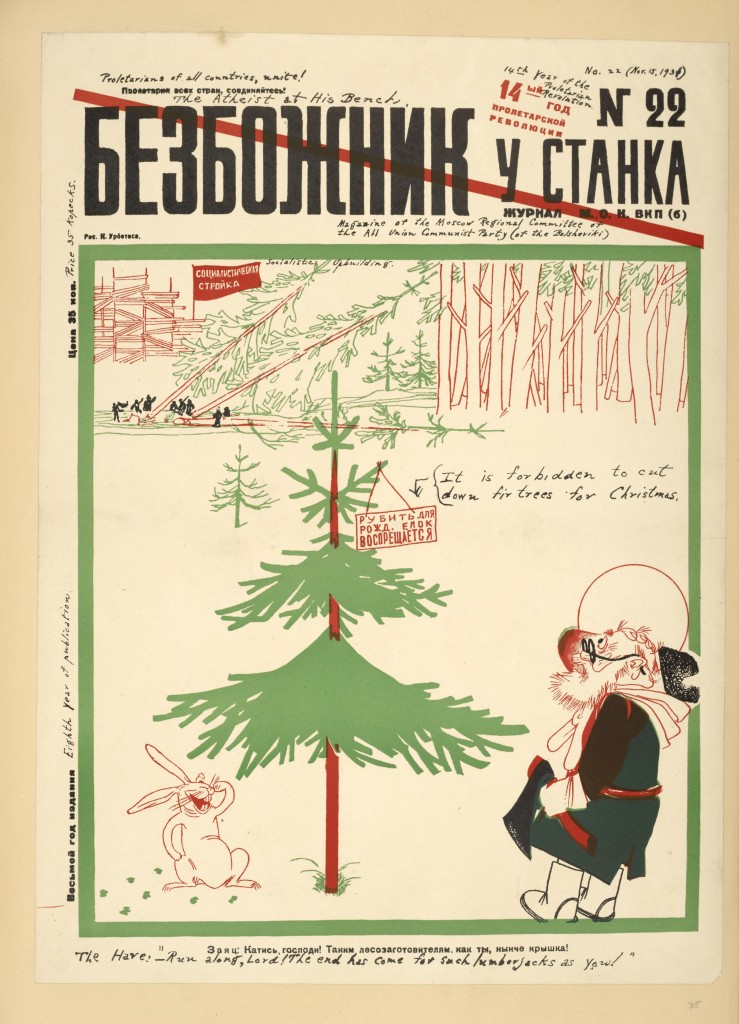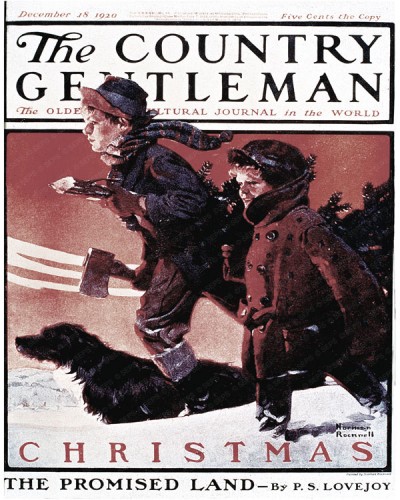Sacred Trees, Christmas Trees and New Year Trees: A Vision for the Future

First published in January 2016
***
Trees are a very important part of world culture and have been at the centre of ideological conflict for hundreds of years. Over this time they have taken the form of Sacred trees, Christmas trees and New Year trees.
In the current debates over climate change, trees have an immensely important role to play on material and symbolical levels both now and in the future. With the rising awareness of climate change, climate resilience i.e. the ability to recover from or adjust easily to misfortune or change, has become the focus of groups from local community action to global treaties. The planting of trees is an important action that everyone from the local to the global can engage in. Trees act as carbon stores and carbon sinks, and on a cultural level they have been used to represent nature itself the world over.
As symbols, trees have been imbued with different meanings over time and I suggest here that they should continue to hold that central role as a prime symbol of our respect for nature, and not just at Christmas time but the whole year round in the form of a central community tree for adults and children alike. In an uncertain future, the absolute necessity of developing a society that harks back to much earlier forms of engagement with nature in a sustainable way will have to have a focal point. Trees as important symbols of our respect for nature have a long and elemental past.
The Tree of Life
From earliest times trees have had a profound effect on the human psyche:
“Human beings, observing the growth and death of trees, and the annual death and revival of their foliage, have often seen them as powerful symbols of growth, death and rebirth. Evergreen trees, which largely stay green throughout these cycles, are sometimes considered symbols of the eternal, immortality or fertility. The image of the Tree of life or world tree occurs in many mythologies.”
In Norse mythology the tree Yggdrasil, “with its branches reaching up into the sky, and roots deep into the earth, can be seen to dwell in three worlds – a link between heaven, the earth, and the underworld, uniting above and below. This great tree acts as an Axis mundi, supporting or holding up the cosmos, and providing a link between the heavens, earth and underworld.”

Yggdrasil, the World Ash (Norse)
Sacred Trees
However, both Christianity and Islam treated the worship of trees as idolatry and this led to sacred trees being destroyed in Europe and most of West Asia. An early representation of the ideological conflict between paganism (polytheistic beliefs) and Christianity (resulting in the cutting down of a sacred tree) can be seen in the manuscript illumination (illustration) of Saint Stephan of Perm cutting down a birch tree sacred to the Komi people as part of his proselytizing among them in the years after 1383.
Stefan of Perm takes an axe to a birch hung with pelts and cloths that is sacred to the Komi of Great Perm (a medieval Komi state in what is now the Perm Krai of the Russian Federation.)
Christian missionaries targeted sacred groves and sacred trees during the Christianization of the Germanic peoples. According to the 8th century Vita Bonifatii auctore Willibaldi, the Anglo-Saxon missionary Saint Boniface and his retinue cut down Donar’s Oak (a sacred tree of the Germanic pagans) earlier the same century and then used the wood to build a church.
“Bonifacius” (1905) by Emil Doepler.
Christmas Trees
Over time the pagan world tree became christened as a Christmas tree. It was believed that evil influences were warded off by fir or spruce branches and “between December 25 and January 6, when evil spirits were feared most, green branches were hung, candles lit – and all these things were used as a means of defense. Later on, the treesthemselves were used for the same purpose; and candles were hung on them. The church retained these old customs, and gave them a new meaning as a symbol of Christ.’(p20) While there are records of this practice dating from 1604 of a decorated fir tree in Strasbourg, it was in Germany that the Christmas tree took hold in the early 19th century. It then “became popular among the nobility and spread to royal courts as far as Russia.”
Father and son with their dog collecting a tree in the forest, painting by Franz Krüger (1797–1857)
The Russian Revolution
In Russia the tradition of installing and decorating a Yolka (tr: spruce tree) for Christmas was very popular but fell into disfavor (as a tradition originating in Germany – Russia’s enemy during World War I) and was subsequently banned by the Synod in 1916. After the Russian Revolution in 1917 Christmas celebrations and other religious holidays were prohibited under the Marxist-Leninist policy of state atheism in the Soviet Union.

A 1931 edition of the Soviet magazine Bezbozhnik, distributed by the League of Militant Atheists, depicting an Orthodox Christian priest being forbidden to cut down a tree for Christmas
New Year’s trees
Although the Christmas tree was banned people continued the tradition with New Year trees which eventually gained acceptance in 1935: “The New Year tree was encouraged in the USSR after the famous letter by Pavel Postyshev, published in Pravda on 28 December 1935, in which he asked for trees to be installed in schools, children’s homes, Young Pioneer Palaces, children’s clubs, children’s theaters and cinemas.” They remain an essential part of the Russian New Year traditions when Grandfather Frost, like Santa Claus, brings presents for children to put under the tree or to distribute them directly to the children on New Year’s morning performances.
Trees in public places
In many public places around the world Christmas trees are displayed prominently since the early 20th century. The lighting up of the tree has become a public event signaling the beginning of the Christmas season. This is now usual even in small towns whereby a large fir is chopped down and displayed prominently in a central part of the town or village. While fir trees are now grown expressly for sale and display, in the past the cutting down of whole trees (maien or meyen) was forbidden: “Because of the pagan origin, and the depletion of the forest, there were numerous regulations that forbid, or put restrictions on, the cutting down of fir greens throughout the Christmas season.”(p20)

Bringing Home the Tree by Norman Rockwell. 12/18/1920.
Not cutting down trees
However if we look at the origins of sacred trees the important point was that they were not to be cut down, as respect for nature took precedence. The cutting down and destruction of so many trees today has become an important part in the commercialization of Christmas. However, growing a tree in the centre of villages, towns and cities as the focal point of our relationship with nature could be a year round celebration for adults and children and another aspect of the call for climate resilience policies the world over. The tree could then be decorated at Christmas or New Year. The decorations can be removed from the tree afterwards, allowing it to become a focal point for other festivities throughout the year. The educational value of this strategy for children would also be as an object lesson in the importance of sustainability and conservation.
Celebrating nature by chopping down the material reality of nature in the form of a tree every year is a contradiction in terms and could be remedied by encouraging people to grow trees or buying potted fir trees instead. Our ancestors from all over the world knew the importance of the balance of nature and tried to keep that balance through rites and prayers before the sacred trees. Now, in an era of climate change, rapidly becoming climate chaos, it is incumbent on us more than ever to develop a new appreciation and respect for nature and especially for trees as a primary symbol of that relationship.
Caoimhghin Ó Croidheáin is an Irish artist who has exhibited widely around Ireland. His work consists of paintings based on cityscapes of Dublin, Irish history and geopolitical themes. His critical writing based on cinema, art and politics along with research on a database of Realist and Social Realist art from around the world can be viewed country by country on his blog.



